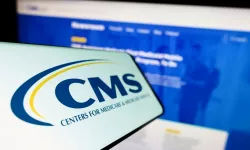Legislation

The combination of the worsening shortage of primary care physicians (PCPs) and the valuable contributions of pharmacists during the COVID-19 pandemic have bolstered the societal case for pharmacist provider status.
According to the Health Resources & Services Administration (HRSA), there is a current shortage of 17,500 PCPs, and a study commissioned by the Association of American Medical Colleges concluded that the U.S. could experience a shortage of up to 48,000 PCPs by 2034. Moreover, the PCP shortage is even worse based on geographic distribution. Just as there are so-called “food deserts”—areas that have limited access to affordable and nutritious food—there are “PCP deserts”—places where there is one or fewer PCP for every 3,500 people, as defined by HRSA. A staggering 102 million Americans—31% of the total U.S. population—live in primary care Healthcare Professional Shortage Areas (HPSAs), and 65% of these HPSAs are in rural areas.
The Public Health Emergency (PHE) enacted by the federal government in response to the COVID-19 pandemic enabled pharmacists to provide essential services, including testing, vaccination, and treatment initiation. According to The Future of Pharmacy Care Coalition, during the pandemic pharmacists provided 350 million interventions to approximately 150 million people, in large measure due to the excellent accessibility of pharmacies—nine in 10 Americans live within five miles of a pharmacy—and the fact that patients visit their community pharmacist twice as frequently as they visit PCPs.
These two factors have generated greater bipartisan support in Washington, D.C. for pharmacist provider status, with two different legislative approaches emerging.
One approach is to mandate Medicare reimbursement of pharmacists for a narrow range of services but broadly in terms of geography. H.R. 1770, the Equitable Community Access to Pharmacist Services Act, expands Medicare to permanently include services provided by a pharmacist, including incidental services and supplies, related to testing, vaccines, and treatment for COVID-19, influenza, and certain other illnesses. As of Jan. 10, the bill had 96 cosponsors (49 Republicans, 47 Democrats), and S. 2477 is an identical bill in the Senate that has 14 cosponsors (8 Democrats, 6 Republicans).
The other approach is to mandate Medicare reimbursement of pharmacists for a broad range of services, but only in geographic areas that are underserved by PCPs. S. 1491, the Pharmacy and Medically Underserved Areas Enhancement Act, which has been brought before Congress a number of times in the past, as of Jan. 10 had 12 cosponsors (seven Democrats, four Republicans, and one Independent). As evidence of the bipartisan appeal of the bill, Sen. Tom Cotton (R-Ark.), one of the most conservative senators, and Sen. Raphael Warnock (D-Ga.), one of the most liberal senators, are among its cosponsors. The bill provides for Medicare coverage and payment at the lesser of 80% of the actual charge or 85% of the Physician Fee Schedule amount for certain pharmacist services that are furnished by a pharmacist in a HPSA and would otherwise be covered under Medicare if furnished by a physician.
The former approach as proposed by H.R. 1770/S. 2477 has garnered the most advocacy support, with backing by The Future of Pharmacy Care Coalition, whose members include the leading pharmacist and pharmacy associations, the nation’s three largest drug wholesalers, several of the largest retail pharmacy chains, and 30 hospitals and health systems.
While there was a paucity of legislation passed by Congress in 2023 and partisanship will almost assuredly continue in 2024, an election year, the aforementioned verities of the worsening PCP shortage and the value demonstrated by pharmacists during the PHE offer hope that pharmacist provider status legislation could ultimately be passed as part of a large end-of-year federal spending package.
About the author: Ken Perez, healthcare marketing, strategy and policy consultant and former Vice President of Healthcare Policy and Government Affairs for Omnicell, Inc.

The Drug Supply Chain Security Act (DSCSA), enacted in 2013 by the U.S. Food and Drug Administration (FDA), aims to usher in significant changes in the pharmaceutical industry to ensure the integrity and security of the pharmaceutical supply chain and protect consumers from counterfeit, stolen, contaminated, or otherwise harmful drugs.
In order to achieve this, the DSCSA set forth technological requirements for ensuring the tracing of pharmaceutical products amongst all trading partners, including pharmacists (both hospital and community). Scheduled originally to go live on November 27, 2023, the FDA recently made an important decision in postponing the enforcement of the DSCSA by one year to allow for stabilization and maturation of systems in hospitals and pharmacies.
New compliance deadline – November 27, 2024; What does this mean for hospital pharmacists?
Hospital pharmacists play a crucial role in the pharmaceutical supply chain as the face of neighborhood healthcare. The delay allows hospital pharmacies another year to prepare and adapt their individual hospital systems to comply with the requirements. But although this brings a sense of relief, it also brings some challenges, as balancing patient care while establishing a comprehensive system is a complex task.
One of the primary concerns is the cost of implementing the necessary systems to comply with the DSCSA requirements. As hospitals work on budgets, pharmacists will need to make strategic investments in software and systems to not only satisfy the technological requirements, but also uphold the quality of patient care. This means that certain medications may take extra time to acquire due to allocating funds to establish a new hospital pharmacy system. However, the compliance date delay allows time for hospital pharmacists to determine what they can do with their present and future budget and plan strategically.
Not only that, but the hospital pharmacy must ensure that adequate staff is available to resolve any potential technological issues and maintain the new system. As hospital pharmacists are responsible for the program, they must ensure staffing is available to continue to provide patient care while also having enough resources to resolve potential technological issues. The additional time announced allows hospital pharmacy staff to ensure they are able to resolve any potential technical issues in their newly integrated system while also maintaining the current care of their patients.
Another concern is the critical aspect of ensuring uninterrupted patient access to prescription medications during the technological integration. As updates within hospital systems require time to initiate and integrate, the potential risk of delaying lifesaving medications for hospital patients poses serious risk for both patients and the institution. Any delays during the integration of the hospital’s system can also potentially slow down or obstruct patient care processes, such as order verification or reviewing patients’ profiles. The delayed enforcement provides additional time for trading partners to adjust their systems without disrupting important patient care needs.
In conclusion, the delayed implementation of the DSCSA provides hospital pharmacists and other trading partners in the pharmaceutical supply chain with additional time to prepare and comply. The FDA’s decision to postpone the enforcement until November 2024 acknowledges the need for further development and refinement of systems and processes. This needed time will ensure a robust supply chain security while maintaining patient access to medications. By extending the timeline, this also opens doors for collaboration, advocacy, and education efforts to support a smooth transition to your newly implemented system.

With climbing costs and stagnant or decreasing reimbursements, hospital budgets seem to keep getting tighter. Couple that with staffing shortages and increased demand on services, and there’s no wonder your team is feeling the stress. But could there be hope on the horizon?
Earlier this year, the Centers for Medicare and Medicaid Services (CMS) announced it’s going to reimburse 340B hospitals about $9 billion. Still, the remedy affects all hospitals that participate with CMS. So, let’s see how your budget may be affected.
Why is CMS reimbursing 340B hospitals?
In 2018, CMS decided to cut the payment rate for 340B drugs without first surveying hospitals on their actual acquisition costs. Normally, the payment rate for all medications is the average sales price (ASP) plus 6%. CMS decided to change the rate for only 340B drugs to ASP minus 22.5%, an almost 30% decrease in reimbursement.
At the same time, CMS increased payments for non-drug items and services for all hospitals, both 340B and non-340B. This is to maintain budget neutrality as required by the Hospital Outpatient Prospective Payment System (OPPS). This was in effect from 2018 through September 28, 2022, when the Supreme Court unanimously ruled the change was unlawful.
CMS cannot have different payment rates for hospitals without first surveying hospitals on their actual cost of drugs. In this case, CMS failed to perform the survey. In the 4th quarter of 2022, it adjusted the 340B payment rates back to ASP plus 6%.
However, because it must maintain budget neutrality, it also reduced the payment rates for non-drug items and services by 3.09% in 2023. While this is an adequate solution for current and future claims, it does not address the affected claims from 2018 to 2022.
The Remedy: How CMS is correcting the unlawful payment adjustments for 2018-2022
The first part of the remedy focuses on repaying 340B hospitals the difference between the two payment rates. From 2018 to 2022, CMS paid providers $10.6 billion less. Since some claims in 2022 were processed or reprocessed at the higher payment rate, CMS will be providing a one-time lump sum of $9 billion to about 1,700 affected 340B hospitals.
In the lump sum, CMS is also accounting for beneficiary cost sharing and any missed payments from lower co-pays under the unlawful payment plan. Therefore, hospitals will not be allowed to bill beneficiaries for coinsurance on remedied payments.
The second part of the remedy focuses on maintaining the required budget neutrality. CMS paid $7.8 billion more to hospitals for non-drug items and services from 2018 to 2022. CMS plans to recoup this money by decreasing payment rates by 0.5% yearly, starting in 2026. CMS predicts this will continue for about 16 years. This is in addition to the 3.09% reduction already seen in 2023.
The only ones who are exempt from this payment reduction are providers who didn’t enroll in Medicare until after January 1, 2018. CMS’ reasoning for this is that these providers didn’t fully benefit from the increased payments for non-drug items seen from 2018 to 2022.
There are strong critics of the price reduction, including the American Hospital Association, the organization that brought the original lawsuit against CMS. So, this will likely be challenged in coming years.
What does this mean for your hospital?
This ruling will be financially beneficial for some hospitals but hurt others in the coming years.
If you’re working for a hospital that does not participate in the 340B drug pricing program, you will face payment reductions for non-drug items or services. So, your budget may ultimately become more limited.
As for 340B hospitals, you should expect a lump sum payment by January 1, 2024 if you haven't already received it. While this is money in your hospital’s pocket this year, you may end up losing money once the payment reductions for non-drug items or services are made in the coming years. This will depend on your mix of drug and non-drug items or services.
For now, these lump sum payments will help hospitals keep vital services open to the most vulnerable patients and give them time to budget for the future payment reductions.
To see how much of a lump sum payment your hospital should receive, you may download the NPRM OPPS Remedy for 340B-Acquired Drug Payment Addendum AAA

The federal 340B Drug Pricing Program, created in 1992, allows qualifying hospitals and clinics that treat low-income and uninsured patients to buy outpatient prescription drugs at a discount. It has been a critical program for many hospitals and health systems, providing significant savings and the ability to offset a fraction of their uncompensated care.
Drug manufacturers have expressed concern about the program’s expansion, especially since multiple contract pharmacy relationships were permitted. Purchases under the 340B program were $44 billion in 2021, about 16 percent more than in 2020. Manufacturers have argued that the statute creating the 340B program does not expressly permit multiple contract pharmacy arrangements. They also assert that the program lacks transparency and oversight, and question whether the savings are being used to lower costs and improve care for vulnerable patients.
Hospitals and other covered entities dispute that the 340B program’s growth is unwarranted, given that a significant amount of the care provided to America’s under- or uninsured population is provided by 340B entities, and policymakers intentionally expanded the program to address this. Furthermore, the cost of the discounts that drug manufacturers provide remains a small percentage of their total U.S. sales (approximately 7% of total drug expenditures) in 2020. They argue that manufacturers are attempting to limit use of the discount drug program only to maximize their profits, and that any effort to limit use of contract pharmacies is a violation of the 340B statute as well as HHS guidance.
Over 20 manufacturers now have placed restrictions on providing discounts to prescriptions filled through contract pharmacy arrangements. Most are requiring covered entities to submit patient drug claims data through a program called 340B ESP to receive the discounted price, or they have severely limited the number of contract pharmacies permitted by a covered entity. They argue these steps are needed to ensure that duplicate discounts are not being applied and to ensure that providers are adhering to the program’s intent.